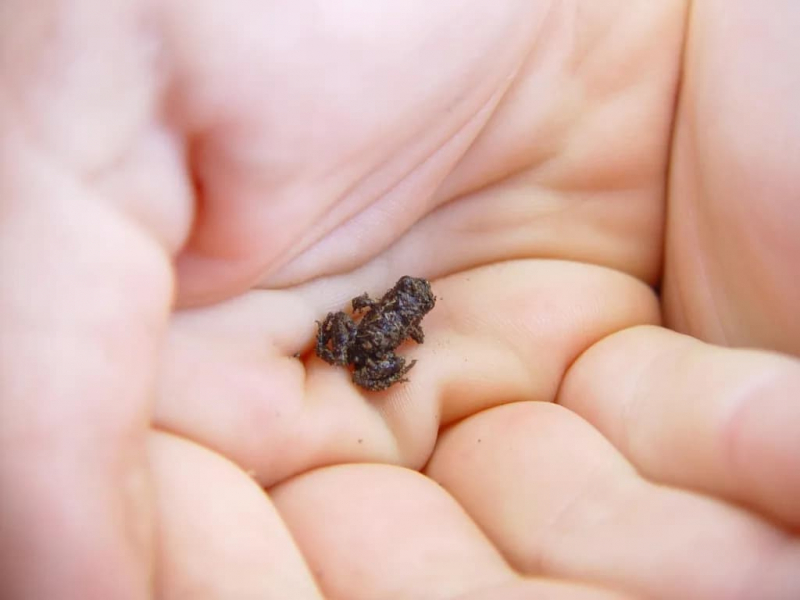Paedophryne Amauensis

The smallest terrestrial vertebrate in the world, Paedophryne Amanuensis, is a tiny frog with a male snout-vent range of 7.0 to 8.0 mm. Since only males have been discovered, the range of the female snout-vent is currently unclear. The head is longer than it is wide. It has a short, wide nose. It has quite large eyes. The fingers' ends are slightly enlarged discs that are not webbed. Particularly the first finger, which is vestigial, the first, second, and fourth fingers are significantly decreased.
P. amanuensis can be distinguished from species outside of the genus by having fewer pre-sacral vertebrates (7 instead of 8). P. amanuensis exhibits reduced ossification of several cranial parts as well as reduced phalangeal and digital structures in the hands and feet, similar to other miniature species. With a snout-vent length between 7.0 and 8.0 mm and a tibia length to snout-vent length ratio between 0.478 and 0.507, Paedophryne amanuensis is physically distinct from the other species in the genus, P. kathismalphlox, P. oyatabu, and P. swiftorum. It differs from P. kathismaphlox by having a wider, shorter head and from P. oyatabu and P. swiftorum by having longer, narrower heads. The dorsal side of P. amanuensis is dark brown with some tan to rusty-brown blotches. The lateral and ventral surface of the frog ranges from dark brown to slate grey with irregular bluish-white speckles.










